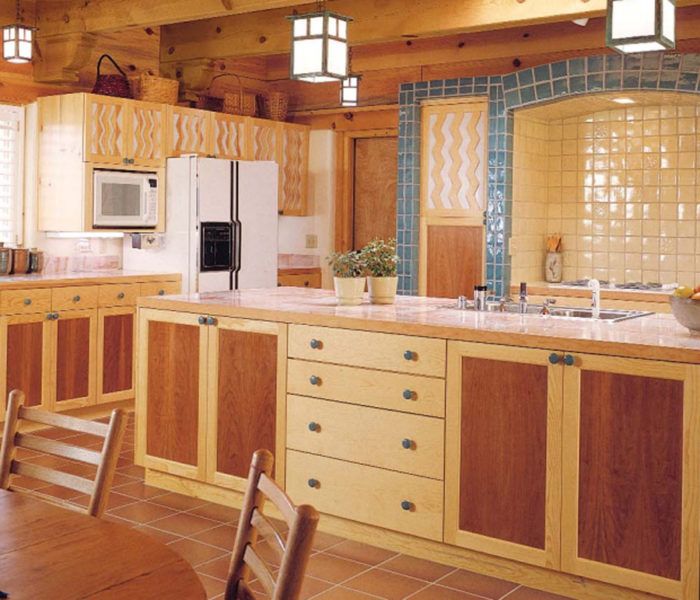Mix and Match: Mail-Order Cabinets
How to get well-made, affordable cabinets from companies that specialize in boxes, doors, and drawers.

Synopsis: Professional cabinetmaker Sven Hanson often assembles kitchens from mail-order components rather than build them from scratch. Doing so saves time and money, but the ordering and assembly can be a little tricky. In this article he helps readers navigate those waters. A big sidebar on the PDF below lists sources of cabinets, doors, drawers, and hardware.
A quiet revolution has taken place in the cabinet industry. All across North America, millwork companies have created lines of cabinet doors, drawers, and boxes that are shipped out as components to be assembled into custom cabinets at distant locations. The boxes might come from Utah, the doors from North Dakota, and the drawers from Arizona, shipped by truck or van in plain brown wrappers. A cabinetmaker, builder, or savvy homeowner can order anything from a single drawer to a whole kitchen’s worth of cabinet parts.
A lot of forces push this trend. Computer controlled woodworking machines, the buying power of high-volume operations, the lower overhead of shops in rural locations, and a great nationwide transportation system all have combined to facilitate the process of building and buying mail-order cabinets. Times have changed, Gepetto.
But is the quality any good?
That’s the first question I’m always asked when it comes to ordering out for cabinet parts. People can be rightfully suspicious of things that are mass-produced. In this case, however, mass production doesn’t mean sloppy; it means accurate and uniform.
Consistency becomes the byword when you’re making 40 doors and 30 drawers for a kitchen. Manufacturers know consistency. For a large run of doors, their grain matches look as good as or better than mine. Their joints are tight and stay closed, and their sanded surfaces are generally excellent.
Component suppliers have created an industry minimum standard of flat and square to within 1 ⁄16 in., and they rarely exceed that. In my experience, fewer than one door in 75 comes close to failing. When it does happen, they replace a door without a squawk.
Cabinet quality is equally excellent. The joinery lines up and goes together easily. The well-labeled pieces have clean and square cuts.
How much do they cost?
When I price a kitchen, I figure the cost of the cabinets by the foot, beginning with the upper cabinets. Here’s an example, using stock sizes and a simple door pattern.
A 30-in.-tall by 12-in.-deep by 18-in.-wide upper cabinet from Alpha costs $39. A raised panel door in pecan from Hutchinson costs $33. That’s a total of $72 for an 18-in.-wide cabinet, which comes out to $48 per ft.
A 36-in.-wide base cabinet with two drawers and one shelf costs $88. Two doors and drawer fronts come to a total of $74. The total for this 3-ft.-wide cabinet comes to $162, or $54 per ft.
Let’s add in some typical additional charges. For example, I prefer to pay more for custom grain matching for doors and drawers. This service typically adds 20% to the door/drawer total but buys prettier wood and excellent panel matching. I add $3 per ft. for hinges and another $10 per ft. for miscellaneous details such as up-charges for nonstandard dimensions, filler strips, and base materials for the toe kick. Finally, I have to add in the freight. I figure a charge of $1 per lb. for large orders of materials traveling a third of the way across the country. By the way, that cost easily triples for small shipments or rush orders.
For more photos and details on mail-order cabinets, click the View PDF button below.

























